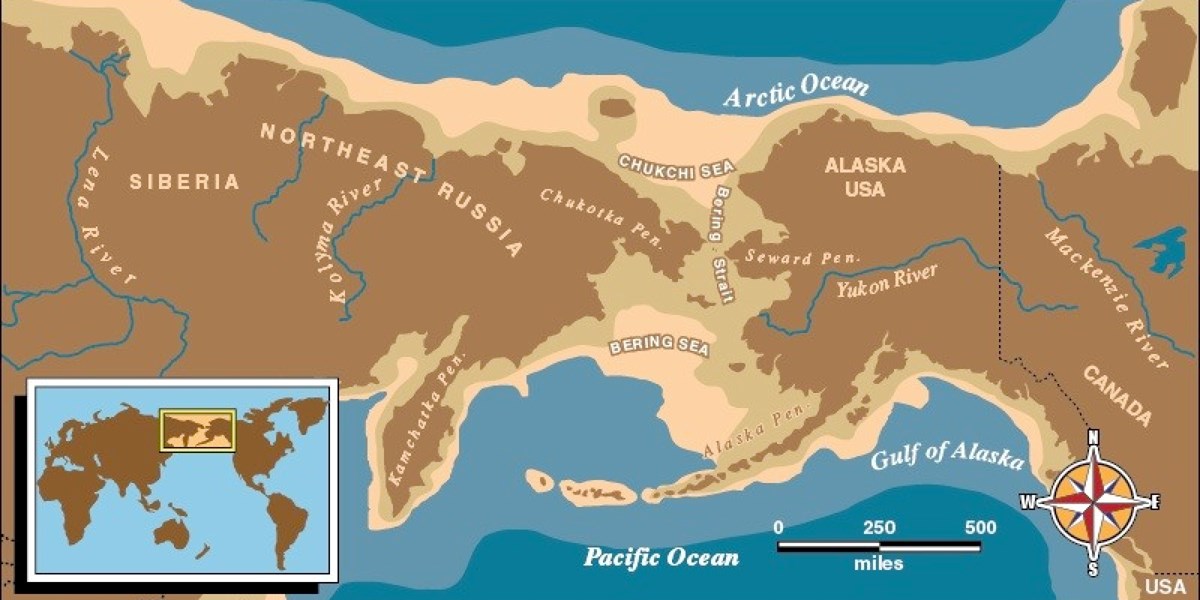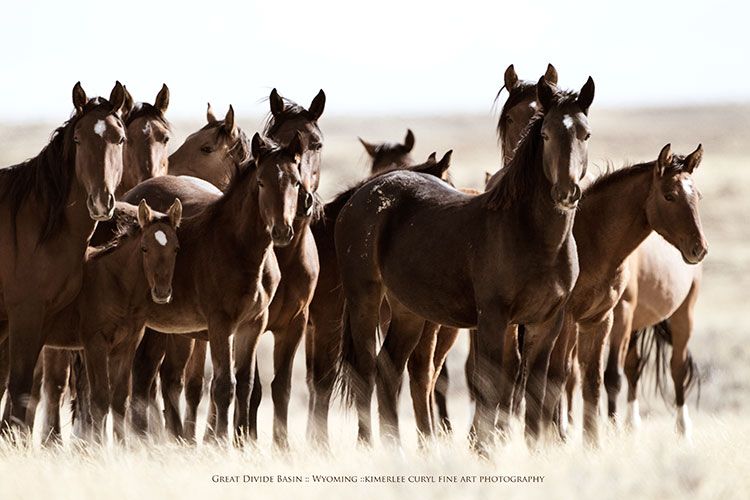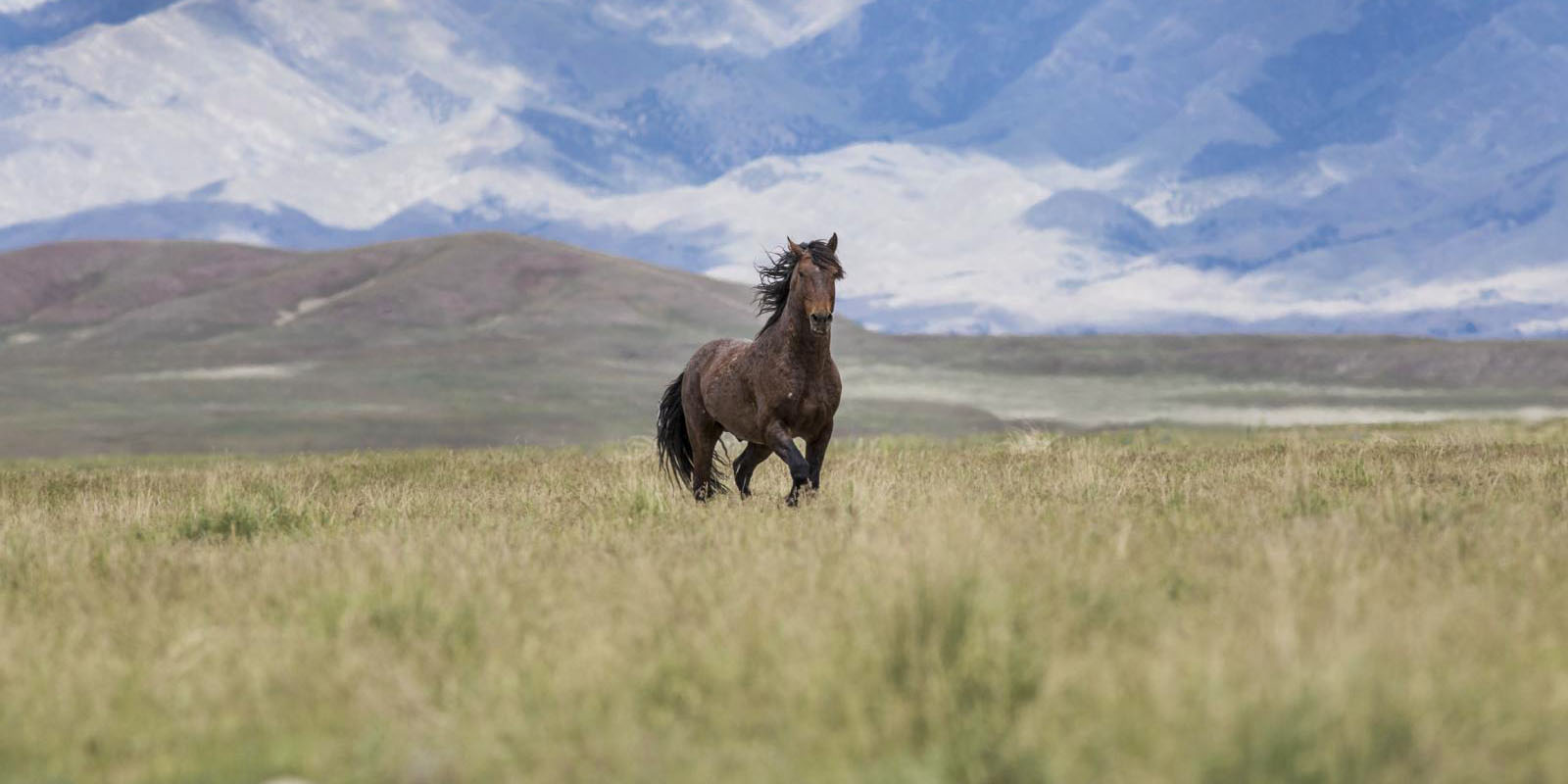By Amelia Perrin
(October 8, 2020) America’s wild horses are deeply interwoven in the fabric of the American West. When you think of wild horses, you may think of freedom, fierce family bonds, and powerful protectors -- all ideals many Americans align themselves with and take great pride in.
So why doesn’t the Bureau of Land Management (BLM) place the same level of pride and honor in these icons? Maybe it's because they consider them invasive or non-native. Maybe they consider them a pest, a threat to cattle ranching lifestyle. No matter the reasons, they are blatantly ignoring the Mustang's long, deeply rooted history in North America.
To help you understand the history, you must first understand, wild horses are actually a native reintroduced species! So, what exactly does that mean?
Let’s break down the terminology. Many people try to diminish the history of wild horses by dubbing them “feral.” What those people don’t understand is the word “feral” actually has no scientific meaning - it purely describes a species’ relationship with humans. It has absolutely no relation to an animal's biological status as native or non-native. Whereas, a native reintroduced species is a native species that was lost on its native land and has come back, either on its own or by being reintroduced back to the land by people. This is what happened to America’s wild horses.
Wild horses evolved and grew on the North American continent millions of years ago. During glacial periods, when the sea level would drop, they would move back and forth across the Bering Land Bridge into Siberia. Horses then went locally extinct 12,000 years ago, but they were not globally extinct. In fact they thrived in Asia and were eventually domesticated 6,000 years ago. Domestic horses spread throughout Asia and Europe, breeding with wild mares along the way.

When Europeans came to North America with their horses in the 1500s, they were introducing a native species back to its place of origin.
Okay, we’re going to take a break here and think about this.
To put it into a perspective that you may relate to, think about the popular DNA testing kit, 23andme. Most people have taken the genetic test or at least know someone who has taken it. The company tests your DNA and traces your ancestry and predicts your physical and health traits. This allows you to see your ancestor’s migratory paths, from all over the world. Despite the fact that your forebears were from Europe, Africa, Asia, South American, or anywhere else in the world, you are all the same species right?
This idea is applicable to the wild horses who crossed the Bering Land Bridge, and then became locally extinct in North America. Despite the local extinction, the same species made a home internationally and then were brought back by the Europeans. These horses had the same genetic lineage as the ones that originally developed on the North American continent, they are Equus Caballus, in plain terms, horses!

One way this has been scientifically proven is through The Original Horse Project. The project, headed by Beth Shapiro, an evolutionary biologist and one of the world's foremost experts on ice age plants and animals studied the movement and DNA of the horses who crossed the Bering land bridge. The study aimed to understand the origin and evolutionary history of wild horses.
Scientists working on this project, including Shapiro, have collected more than 500 well-preserved remains and are in the process of recovering their DNA to compare DNA sequences. Shapiro’s goal is to sequence DNA from the hundreds to thousands of well-preserved remains across the horses' migratory paths in order to learn how horses dealt with past climate changes, and to prove how the returned horses are related to the horses that developed millions of years ago on the North American continent. To hear Dr. Shapiro talk a little more in depth about the study, you can watch a little video on her work here.
There is no question about it; the native wild horses are as American as apple pie. They have a place on our lands, both ecologically and by law. We, as the American public, owe it to the horses to protect and preserve their iconic lives for generations to come.


